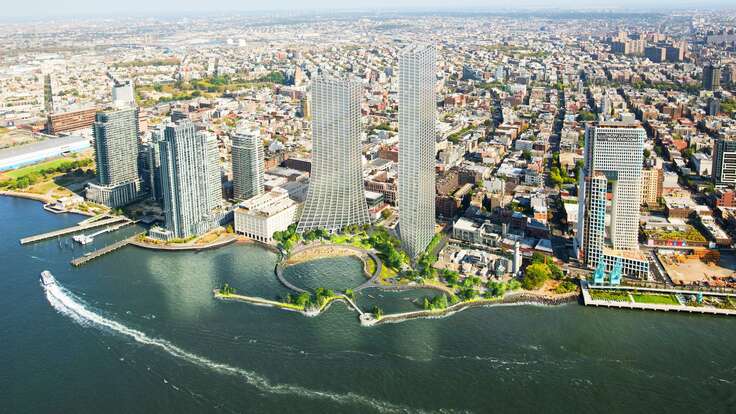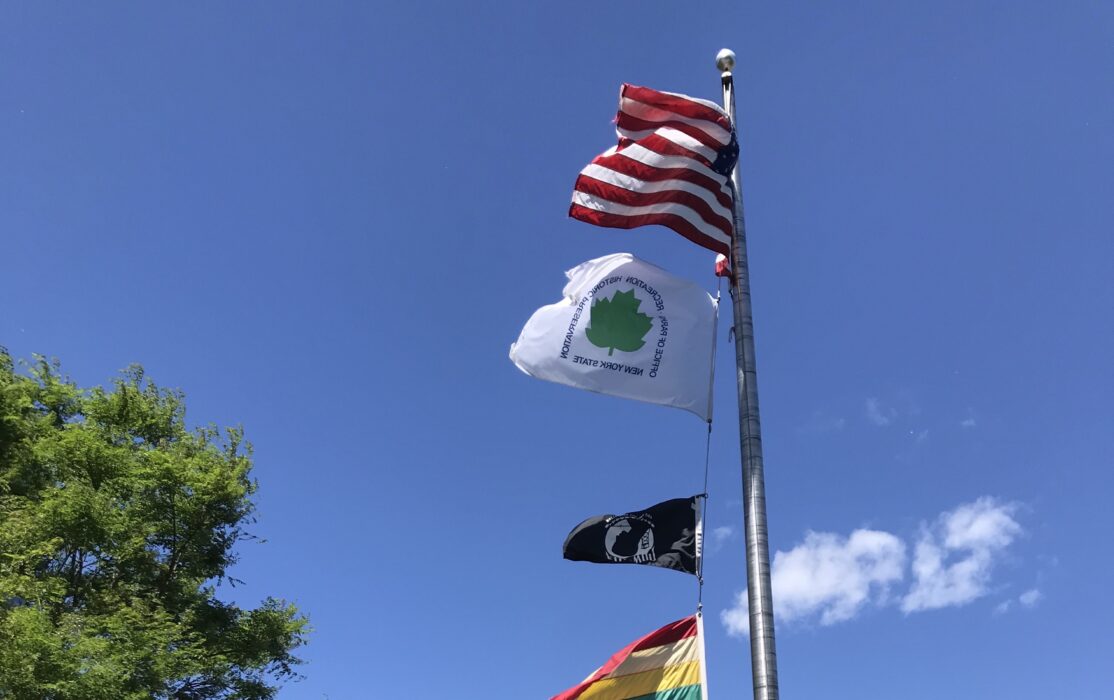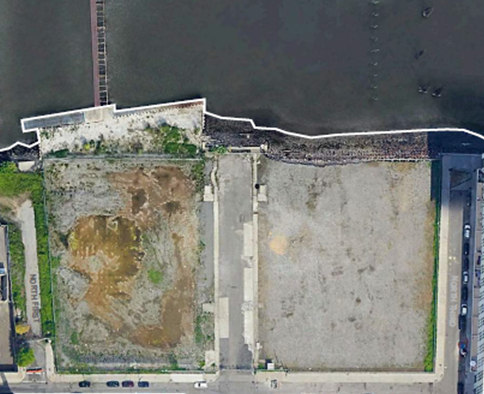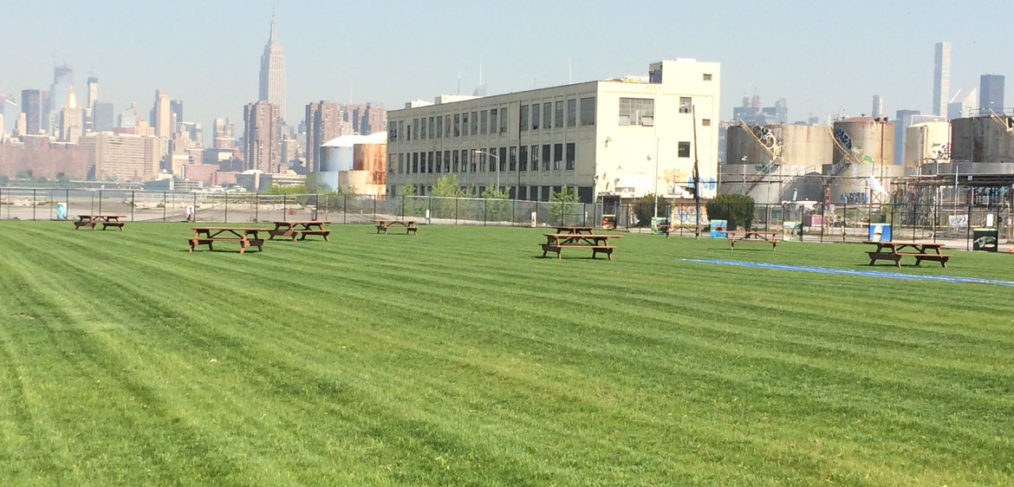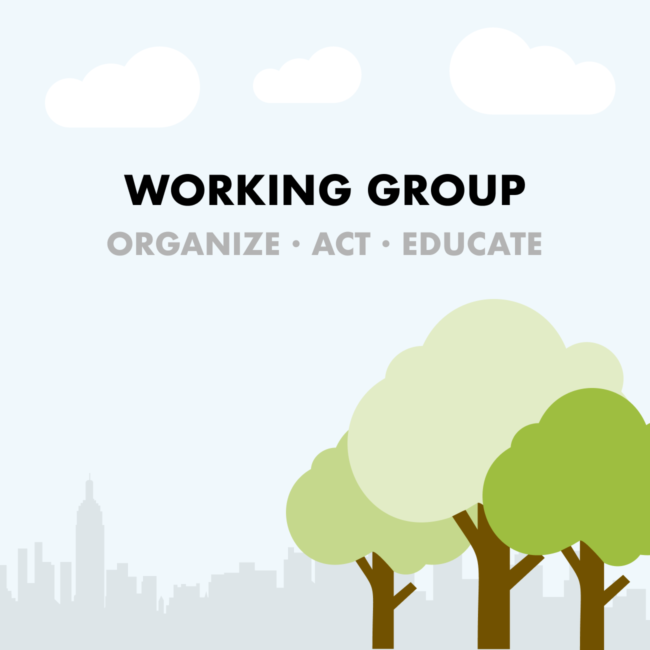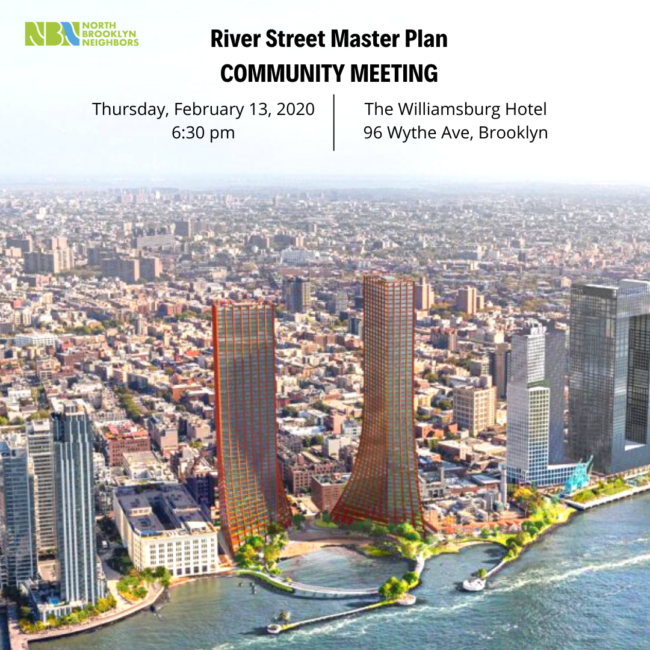Where’s Our Park?
Since 2012, NAG has been working with Friends of Bushwick Inlet Park, GWAPP and others to push the city officials to fulfill open space promises made to Greenpoint and Williamsburg. This project is especially meaningful because it came about during the fight against the Giuliani administration’s efforts to place additional waste transfer stations along the Williamsburg waterfront. Below is a brief, and very incomplete ,look at the story behind the Where’s Our Park? effort.
The 2005 rezoning was a watershed moment in the history of our community. Since 2005, hundreds of new developments have gone up throughout Williamsburg and Greenpoint, and thousands upon thousands of new residents have joined our community as a result.
When the City rezoned 184 blocks along our waterfront, it promised to develop new open space to mitigate the impact of 20,000 new residents in a community that already ranked among the lowest for per capita open space in the city. Bushwick Inlet Park was the centerpiece of that commitment – a 28-acre waterfront park, straddling the border between Greenpoint and Williamsburg. In the years since the rezoning, we have seen the opening of a soccer field and the green-roofed parks/community facility. Those developments are fantastic additions to our community but they represent less than 15% of the park that the City committed to build a decade ago.
What’s going on with the other 85% of the park? Over the years, the City has acquired almost 18 acres – about 64% – of the future park. But no work has been done to develop this acreage as parkland, and before any park construction can begin, there will need to be considerable remediation work to undo the legacy of a century and a half of heavy industrial uses on the sites.
The last piece of the Bushwick Inlet Park puzzle – the piece the City hasn’t acquired, and has admitted that they have no plans to even negotiate for – is the CitiStorage site. This property – 6.25 acres, almost a quarter of the park area – sits right in the middle of Bushwick Inlet Park. It includes the full-block white-and-blue building immediately north of the soccer field, between North 10th and North 11th Streets. It also include the storage building at the west end of the block between North 11th and North 12th Streets that recently burned to the ground in a catastrophic fire.
Because of its location, Bushwick Inlet Park wouldn’t be a park without the CitiStorage site. The property is privately owned, and could be sold and developed for a variety of commercial uses, including big-box retail, offices and other non-residential uses that are very much viable in the booming Williamsburg/Greenpoint market. An owner could also propose to rezone the property for residential use. A tall residential tower with parkland surrounding might be an appealing compromise for the city, but not for us.
Bushwick Inlet Park is a massive and expensive undertaking, and the issues surrounding the acquisition of the last piece of the puzzle are complicated and arcane. But the core issue surrounding the park – the City’s commitment to Williamsburg and Greenpoint to provide a new park that will be “the centerpiece of the Greenpoint-Williamsburg Waterfront” is actually pretty simple. In 2005 the City promised new development and new open space. The new development has happened – many of you are here because of it – but the City has not kept its promise regarding Bushwick Inlet Park. More disturbing, the City has admitted that it has no plans to acquire the last piece of Bushwick Inlet Park.
The history of Bushwick Inlet Park goes back much further than the 2005 rezoning. The following is a brief timeline about the origins of the park and the community (and the City’s) fight to put open space on the Greenpoint and Williamsburg waterfront.
In 1992, the New York Parks Council recommended that the waterfront blocks from North 5th Street to North 11th Street be designated as public open space.
In 1998, the State Legislature earmarked $10 million to acquire a two-block section of an industrial waterfront site between North 7th and North 9th Streets in Williamsburg for conversion into a park.
In 2000, the NYC2012 Olympic bid proposed beach volleyball and archery competitions within an expanded waterfront park. The NYC2012 bid envisioned these athletic facilities being turned over to public parkland after the 2012 Olympics.
Spring 2002, the City approved Williamsburg 197-a plan recommended park use from North 4th to North 10th Streets, with CitiStorage to continue its light industrial operations. The 197-a plan was a community-based planning document, the origins of which went back to the early 1990s. Throughout the 197-a planning process, the waterfront area around Bushwick Inlet was always seen as publicly-accessible open space. Part of the impetus for the community embarking on the 197-a process (and the origin of NAG – Neighbors Against Garbage) was a proposal by the Giuliani administration to locate waste transfer stations on the Williamsburg waterfront around North 5th Street.
Also in 2002, TransGas Energy Systems proposed to construct an 1,100-megawatt at the Bayside Fuel site on Bushwick Inlet. The community fought this proposal for over 7 years, finally defeating it in 2010. Every step of the way, the City was on our side, fighting for a park on Bushwick Inlet. There was talk of compromise along the way, but the City – and the community – was having none of it.
In 2003, the City Planning Commission proposed mapping parkland from North 7th Street to Quay Street on the north side of Bushwick Inlet.
In 2005, the City passed the rezoning with parkland mapped from North 7th Street through the Bushwick Inlet. Community Board 1 opposed that rezoning, in part because the proposed open space was inadequate for the anticipated population growth for the area. Prior to the rezoning, North Brooklyn ranked near the bottom in terms of per capita open space in the City. Even with the 28-acre park and 7 additional acres of open space promised by the rezoning, we would continue to rank well below the city median for open space. Despite community opposition, the rezoning passed.
In 2015, a massive fire destroyed the CitiStorage warehouse on the block between North 11th and North 12th Streets. This fire also sparked community outrage over the City’s lack of movement on the acquisition of the CitiStorage property. Since February 2015, NAG has been actively involved with Friends of Bushwick Inlet Park to push the City and the property owner to come to an agreement to give the community the park that it was promised.
As of 2016, eleven years after the rezoning, the new development promised by the rezoning has come, but the parks and open space has not. Less than 15% of Bushwick Inlet Park has been constructed. The 7-acre CitiStorage parcel still has not been acquired by the City. The remaining portions of the promised park await remediation and construction – a process likely to take many more years.
There has been talk that the perhaps the best solution to Bushwick Inlet Park is some sort of development compromise. When you hear this, remind people that Bushwick Inlet Park in its proposed configuration already represents a substantial compromise on the part of the community. And a unilateral compromise at that.
It’s time for the City to hear from the Community. If the City can’t keep its promises to North Brooklyn, why would any other community trust the City to keep its promises in future rezonings?


